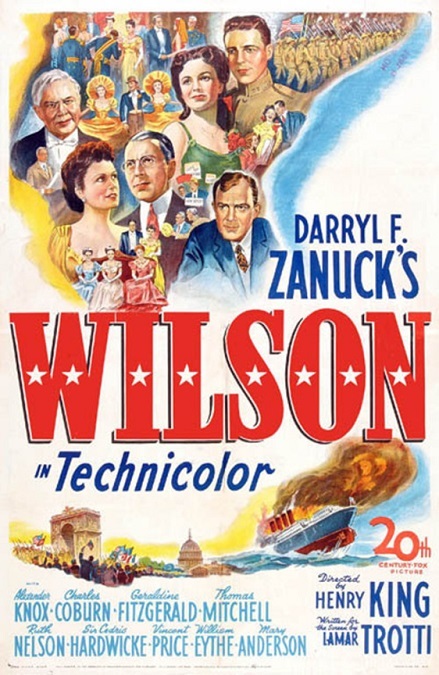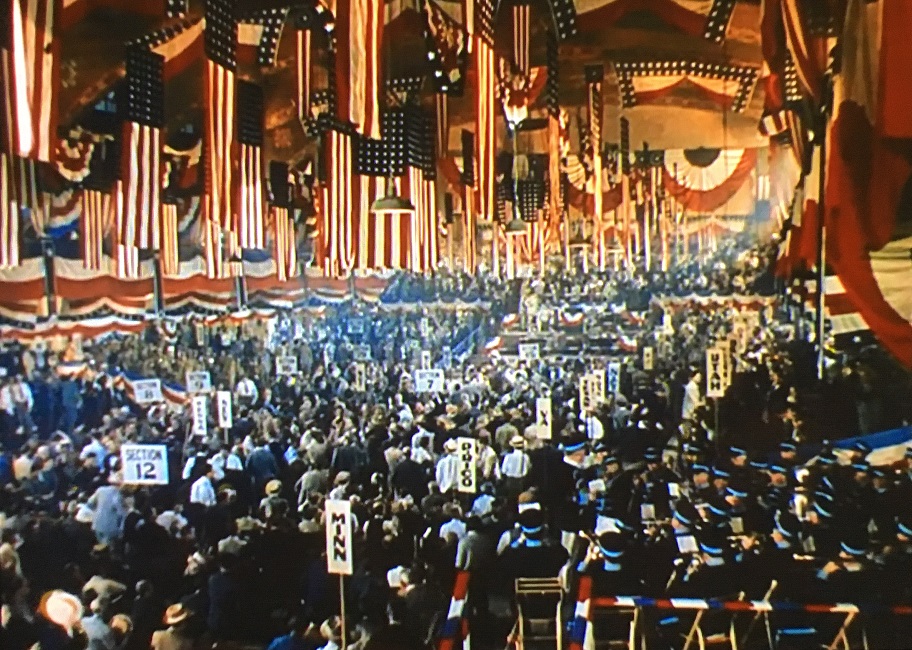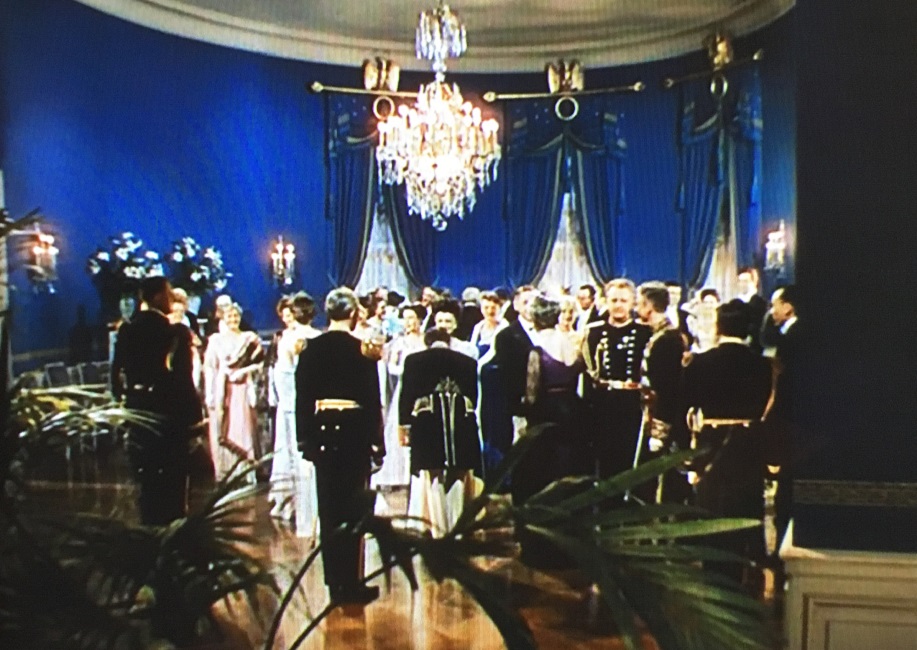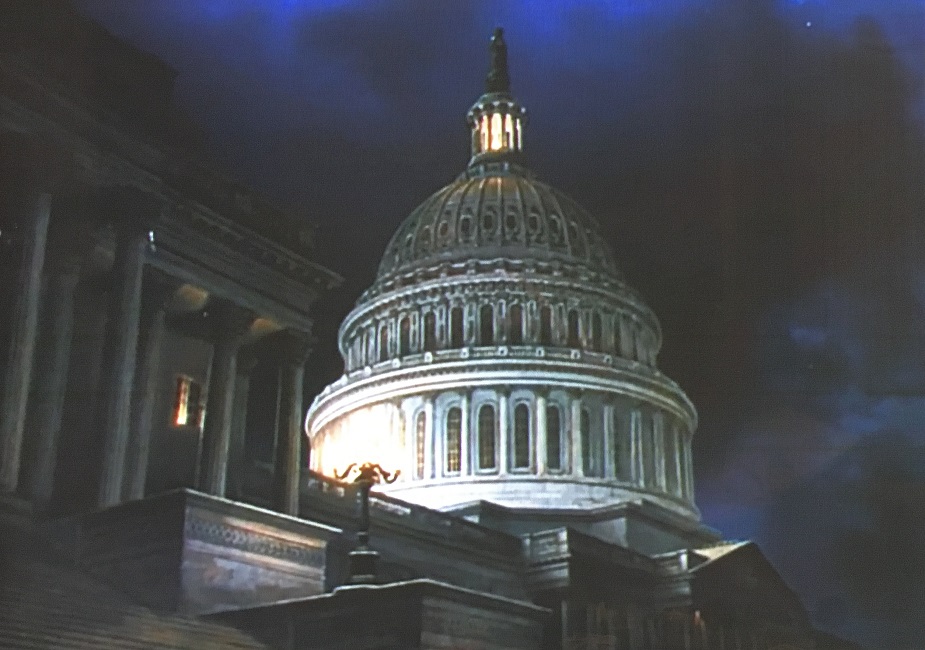



Wilson – 1944

At first, I was really questioning why this movie was nominated for Best Special Effects. Once again, there just didn’t seem very many on which to really comment. So I spent some time doing some research on the internet. I looked up movie reviews, read articles about the nature of different special effects, and tried to get a sense of what was so special about Wilson.
And I think I came up with a credible answer. One of the things about the film that stood out to me, especially considering the lack of obvious visual effects, was a particular sense of scale. There were a lot of scenes in which the actors seemed to take a back seat to the gigantic sets. There were large and grand halls that were filled with hundreds or thousands of people. There were wide shots in which a lone actor would look small and insignificant compared to his surroundings, something that was done quite on purpose as a means of effective story-telling and character development.
But I figured, all they had to do was decorate a large studio and hire a bunch of extras. But then I got to thinking that easier than decorating the set, or cheaper than employing a bunch of extras, they probably used elaborate matte-paintings and composited the images with fewer live actors. And to be sure, the images on the screen looked completely real.
My next step was to look at the man responsible for the effects. His name was Fred Sersen. He was the same man that created the special effects for both the 1939 special effects winner, The Rains Came, and the 1943 winner, Crash Dive. According to the short biographical article by media historian Hal Erickson, which is posted on the Fandango website, Fred Sersen was an effects artist that was known for, among other things, using his craft to “create the illusion of vast landscapes, huge palaces, and natural disasters where none actually existed.”
Wilson sure had that in spades. From images of the 1912 Democratic convention hall in Baltimore, to the grand and beautiful interiors of the White House, to the interior of the Capitol Building while Wilson addressed Congress to declare a state of War against Germany. The massive and elaborately detailed sets could only have been the work of a highly skilled effects artist.
But aside from those large scale illusions, there weren’t many effects that were easily recognizable. There were a couple of rear-projection shots that were used in a scene where the characters were riding in a horse-drawn carriage, but not much else. That being said, I’m sure there were other things I’m overlooking, but nothing that stood out to me visually. Was it enough to earn the film its nomination? I suppose so, but I understand why it didn’t win.